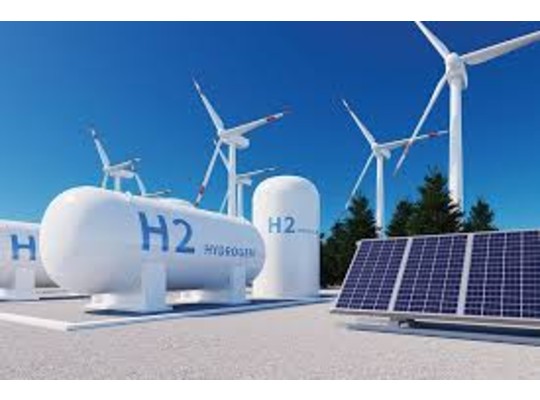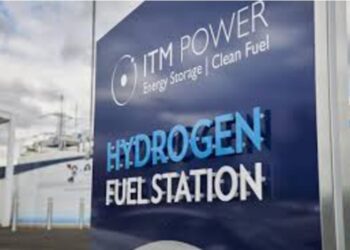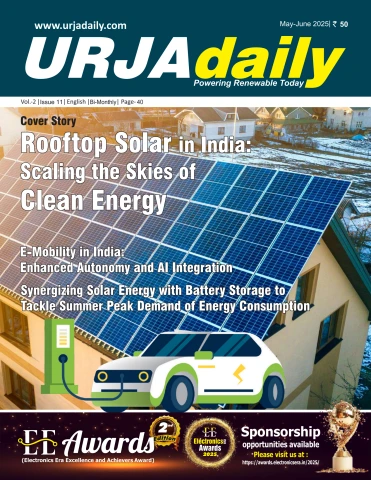In a world where new technology is emerging at a dizzying speed Artificial Intelligence (AI), has turned into a light bulb for this century. It is no longer an afterthought or a buzzword; rather it has become the foundation upon which sectors are being built and scaled. And the flag-bearer for the net zero mission, green hydrogen, is no exception to this journey.
AI is a fulcrum around which the growth path for the sector can be structured. From diagnosing faults and optimizing processes to enhancing decision-making, it can become an essential tool for companies to address the complexities of the green hydrogen economy.
Fault Diagnosis and Detection
One of the most frequent use case scenarios for AI is identifying the deafults within the production process of green hydrogen. It can analyze a wide spectrum of operational data to pinpoint the root cause of issues by using algorithms, and then suggest swift corrective action that significantly reduce the downtime. This function called predictive maintenance can anticipate machine failures and ensure that they are dealt with it before they derail the entire chain of operations.
For instance, many companies have implemented an AI-based predictive maintenance system for electrolyzers at their hydrogen production facilities. A multinational German company reported a 25% reduction in maintenance costs and a 30% increase in equipment uptime as a result of these systems.
Process Optimization
The production of green hydrogen is a complex process with variables such as electricity input, water quality, temperature, and pressure that can analyzed by AI algorithms to determine the right working parameters. It not only enhances the yield but also the scale of green hydrogen production.
The simulations can help stakeholders visulaize the outcome of their options in the early stage of decision making which can then help in assessing the return of investments in the green hydrogen projects. The integration of the AI algorithms with software-centric universal automation framework which is based on the IEC61499 concept enhances the production process.
AI is already being used in incorporating renewable energy sources into the green hydrogen ecosystem. Smart grids, enhanced by AI, aid the interactions among energy producers, consumers, and storage systems, in deciding how energy is distributed and stored. For instance, AI-powered real-time planning systems can determine whether excess energy in a micro-grid should be stored in a battery energy storage system (BESS) or utilized for green hydrogen production through alkaline water electrolysis.
Overcoming Challenges in AI Integration
Despite its promise, the integration of AI into the green hydrogen is far from developed and will still have to go a long way to realize its full potential. For this some bottlenecks will have to be dealt with. These include optimizing complex systems to manage the intricacies involved in hydrogen production and distribution chain, creating AI models that rely on thorough data collection and management, especially in decentralized systems and protecting these systems from cyber threats, given the significance of the entire infrastructure.
Real-World Applications and Innovations
In Australia, a trade body known as Commonwealth Scientific and Industrial Research Organisation (CSIRO) partnered with industry stakeholders to create a control system driven by AI for a renewable hydrogen production facility. This system optimized electrolysis operations based on real-time renewable energy availability, achieving a 15% increase in efficiency.
Machine learning (ML) models are another key innovation. These models analyze datasets generated during electrolysis to identify patterns and relationships. AI is transforming the green hydrogen sector by offering smarter ways which can increase efficiency and reduce costs for routine and traditional tasks. Techniques like regression analysis, neural networks, and reinforcement learning enable real-time adjustments that maximize hydrogen output while minimizing energy consumption. Studies indicate that AI-driven optimization can reduce energy use by up to 20%, a material cost savings to producers which can be a turning point in combating the cost parity between green and grey hydrogen.
What Lies Ahead
The integration of AI with renewable energy and green hydrogen technology holds exciting prospects that are only now beginning to be explored. Picture machine learning systems adjusting electrolysis processes in real time to make best use of solar or wind energy on hand, with little to no waste. While this approach is still in its infancy, the pace of innovation is picking up rapidly. Ongoing efforts in research and development will be essential to making these solutions practical, adaptable, and widely embraced. By refining machine learning tools and using data insights, we can push production efficiency to new heights and take meaningful steps toward a cleaner and more sustainable energy future.













